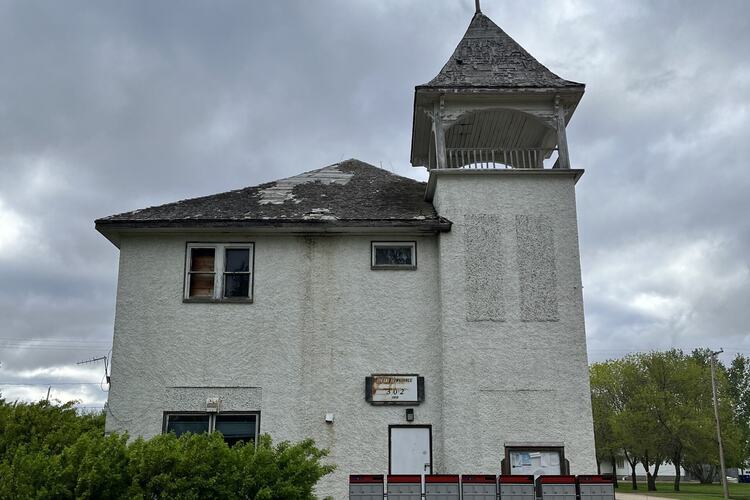Jun 24, 2024 By Faith Boser, Summer Researcher (2024) Whether you have grown up in urban or rural areas in Saskatchewan, your understanding of your place in the world has been influenced by your environment. Especially in small, tight-knit towns in rural Saskatchewan, children come to intimately know the buildings around them and what they signify in their lives. In my experience, growing up in a few small towns in Saskatchewan, primarily Scott, Wilkie and Unity, the architecture around me, particularly the old buildings in the village of Scott, instilled in me wonder and appreciation about the past from a very young age. Interacting with older properties makes you wonder about the past, what happened here, who built these buildings, and why they were built here. This interaction led me to look into the village and the surrounding town’s histories at a young age. Sadly, many buildings I admired in Scott were lost throughout my childhood. Many were abandoned and demolished by the village and landowners or succumbed to arson. I will never forget the day my parents and I watched as they demolished the historic grain elevator that stood not far behind our house. The historic town post office (fig.1 and 2) was still in use during my childhood, so I would interact with it often while getting the mail for my parents. I would spend many hours of the day playing in the area around the building since we lived just down the street. Every day at noon and 6 o’clock, an alarm would go off (since the bell was no longer in use) on the building to signify the time of day, which in the evening would indicate to my sister and me that it was time to finish our adventures and head home for the day. That same alarm would signify a fire in town, so it was quite jarring. I was lucky enough to see inside closed-off portions of the building when I was young since my dad was the ‘town man.’ The building was once a fire hall, an apartment building, and a town hall. It was once a venue to host birthday parties, dances, Christmas concerts and anniversaries. I vividly remember the giant safe and jail cell in the basement, which really signified how many uses the building had in its lifetime. I was enamoured by the tour and yearned to know more about the history of what was once a booming town that had become a quiet and empty village. Finding information on Scott's history throughout my life has been difficult. Many stories of the town have been lost with the passing of many lifelong residents through the years. The village had been working on a history book on Scott and its residents for their centennial, but since the event in 2010, it has yet to be published. Since the village was such an important part of my childhood and a place my dad still calls home, I have continued to be interested in the area into adulthood. My story is very far from unique, and research has shown that children's experiences with built heritage from a young age immensely shape their sense of self and place within their communities. As we become adults, these spaces continue to have significance in our lives, connect us to our identities and communities, and build an attachment to the places around us. My research project for my work term is focused on funding. To emphasize why heritage projects are worth funding, I have been doing a lot of supplementary research on the many ways heritage is important to communities. I came across an article by Grimshaw and Mates (2022) that explored the influence of urban heritage in sense of place building for children, which made me reflect on my past. This article documented children’s experiences interacting with their local heritage through place-based learning. The authors cited the importance of children interacting with their locally built heritage as a way to learn about their town’s history. These interactions allowed children to think about how they belong within their community and society by reflecting on the effects of the past on the present and their influence on the future. This resulted in the children building emotional connections with places through these interactions, as they fostered feelings of excitement and intrigue (Grimshaw and Mates 2022). The authors emphasized that the children's experiences engaging with their past and establishing a sense of place can impact how they behave in the future, such as being more active in their communities and appreciating the past into adulthood. The experiences I had as a child that I expressed above, although not in an educational setting, were just a handful of interactions with my community and the province’s heritage. The built heritage around me was a starting point for learning about my community’s heritage. It fostered an appreciation for heritage and an emotional attachment to the community and the province into adulthood. Sadly, many of the historic buildings in Scott that tell its history are gone or no longer cared for, meaning the next generation growing up in the town is missing out on the experiences that I had. Conserving our heritage is one way of ensuring that future generations learn and appreciate the past, participate in their communities, and continue to value heritage conservation when older generations are gone. References A Personal Reflection on Our Attachment to Place: How Interactions with Heritage Impact Us in our Youth


in a state of abandonment, June 2024 (front view).
in a state of abandonment, June 2024 (back view).
Grimshaw and Mates
2022 ‘It’s part of our community, where we live’: Urban heritage and children’s sense of place. Urban Studies 59(7): 1334-1352.
